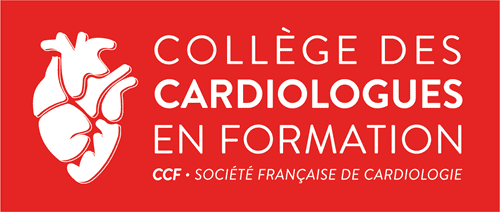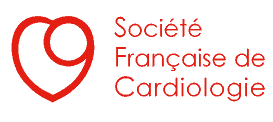Suivez nous sur les réseaux sociaux
Cet outil a vocation à informer, diffuser l’information auprès des jeunes cardiologues (internes, assistants, chefs de cliniques, jeunes praticiens, etc.), et faciliter les échanges.
Voici un aperçu rapide des sujets abordés dans cette publication :
Toutes nos publications
Une question ?
Publications
Tricuspid annular plane systolic excursion over systolic pulmonary artery pressure prognostic value for in-hospital adverse events in patients hospitalized for acute coronary syndrome
Voici un aperçu rapide des sujets abordés dans cette publication :
Tricuspid annular plane systolic excursion over systolic pulmonary artery pressure prognostic value for in-hospital adverse events in patients hospitalized for acute coronary syndrome
Charles Fauvel, Jean-Guillaume Dillinger, Claire Bouleti, Antonin Trimaille, Christophe Tron, Anne Solene Chaussade, Christophe Thuaire, Clément Delmas, Albert Boccara , Vincent Roule, Damien Millischer, Eugénie Thevenet, Christophe Meune, Mathilde Stevenard, Clément Charbonnel, Laura Maitre Ballesteros, Thibaut Pommier, Amine El Ouahidi, Fédérico Swedsky, David Martinez, Marie Hauguel-Moreau, Guillaume Schurtz, Augustin Coisne, Valentin Dupasquier, Thomas Bochaton, Edouard Gerbaud, Etienne Puymirat, Patrick Henry, Théo Pezel, for the ADDICT-ICCU Investigators
European Heart Journal – Cardiovascular Imaging, Volume 25, Issue 9, 26 August 2024, Pages 1244-1254
PMID: 38650518
DOI: 10.1093/ehjci/jeae110
Summary
Aims
Although several studies have shown that the right ventricular to pulmonary artery (RV-PA) coupling, assessed by the ratio between tricuspid annular plane systolic excursion and systolic pulmonary artery pressure (TAPSE/sPAP) using echocardiography, is strongly associated with cardiovascular events, its prognostic value is not established in acute coronary syndrome (ACS). We aimed to assess the in-hospital prognostic value of TAPSE/sPAP among patients hospitalized for ACS in a retrospective analysis from the prospective ADDICT-ICCU study.
Methods and Results
A total of 481 consecutive patients hospitalized in intensive cardiac care unit [mean age 65 ± 13 years, 73% of male, 46% ST-elevation myocardial infarction (STEMI)] for ACS [either STEMI or non-STEMI (NSTEMI)] with TAPSE/sPAP available were included in this prospective French multicentric study (39 centres). The primary outcome was in-hospital major adverse cardiovascular events (MACEs) defined as all-cause death, resuscitated cardiac arrest, or cardiogenic shock and occurred in 33 (7%) patients. Receiver operating characteristic curve analysis identified 0.55 mm/mmHg as the best TAPSE/sPAP cut-off to predict in-hospital MACEs. TAPSE/sPAP <0.55 was associated with in-hospital MACEs, even after adjustment with comorbidities [odds ratio (OR): 19.1, 95% confidence interval (CI) 7.78-54.8], clinical severity including left ventricular ejection fraction (OR: 14.4, 95% CI 5.70-41.7), and propensity-matched population analysis (OR: 22.8, 95% CI 7.83-97.2, all P < 0.001). After adjustment, TAPSE/sPAP <0.55 showed the best improvement in model discrimination and reclassification above traditional prognosticators (C-statistic improvement: 0.16; global χ2 improvement: 52.8; likelihood ratio test P < 0.001) with similar results for both STEMI and NSTEMI subgroups.
Conclusions
A low RV-PA coupling defined as TAPSE/sPAP ratio <0.55 was independently associated with in-hospital MACEs and provided incremental prognostic value over traditional prognosticators in patients hospitalized for ACS.


